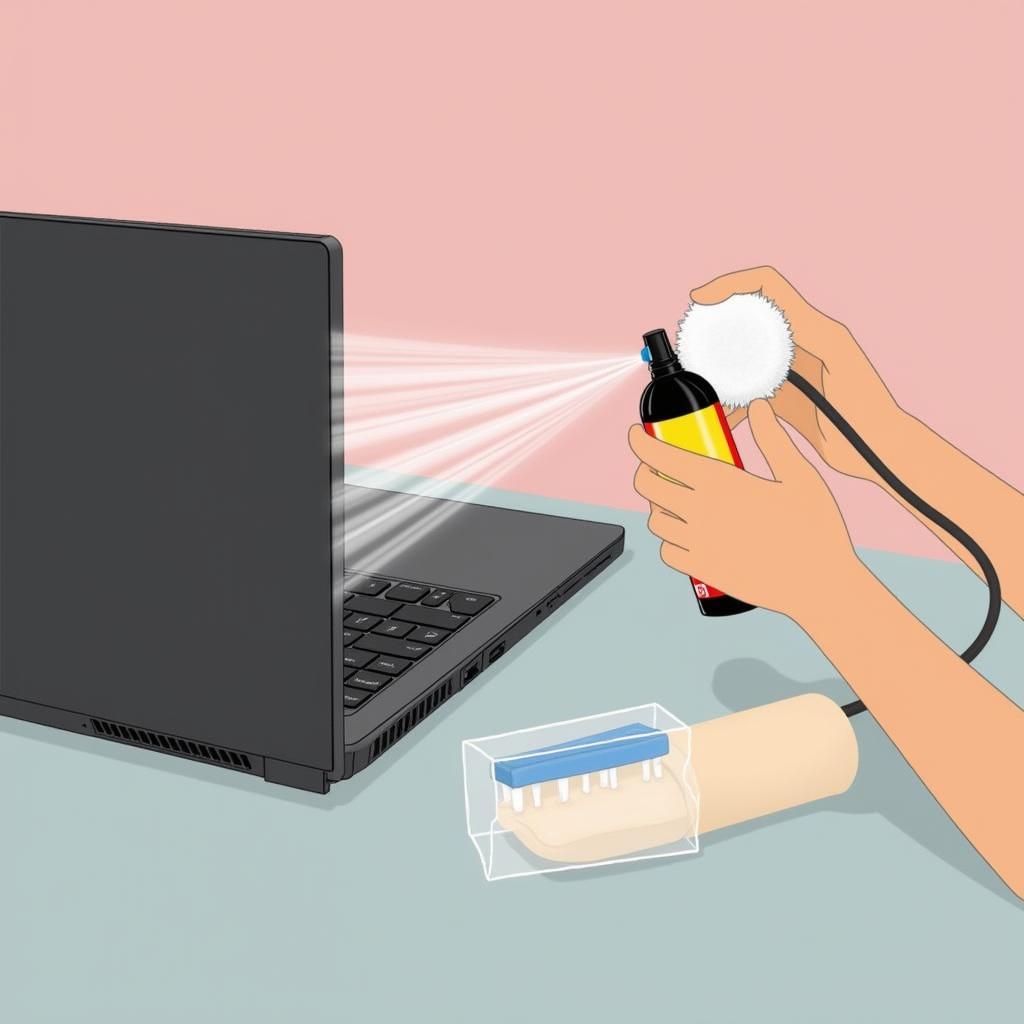Have you ever been in the middle of a heated online match, only to have your game stutter and lag? Frustrating, right? That’s why it’s crucial for gamers to fan check their laptops. This simple action can prevent overheating and improve your overall gaming performance. In this guide, we’ll walk you through the steps on how to fan check your laptop, explain why it’s essential, and provide valuable tips to ensure your gaming sessions are smooth and uninterrupted.
Why Is Fan Check Important for Gamers?
Imagine yourself immersed in a thrilling game, adrenaline pumping, then suddenly, your laptop starts to lag, the graphics stutter, and your character freezes mid-move. It’s a gamer’s worst nightmare. This lag is often a telltale sign of your laptop overheating.
Overheating and Its Impact on Gaming
Here’s why laptop overheating is a gamer’s enemy:
- Reduced Performance: High temperatures can cause your laptop’s CPU and GPU to throttle, meaning they automatically slow down to prevent damage. This directly translates to lower frame rates, lag, and a frustrating gaming experience.
- System Instability: Excessive heat can cause your laptop to crash or even shut down unexpectedly, interrupting your game and potentially losing your progress.
- Component Damage: Overheating over extended periods can lead to permanent damage to your laptop’s hardware, including the CPU, GPU, and motherboard. This is a costly repair and can even render your laptop unusable.
How to Fan Check Your Laptop: A Step-by-Step Guide
Regular fan checkups are crucial for maintaining your laptop’s health and ensuring optimal gaming performance. Here’s a simple and effective guide:
- Power Down and Disconnect: Begin by turning off your laptop completely and disconnecting it from any power source. This step ensures that there’s no risk of electric shock.
- Locate the Air Vents: Identify the vents on your laptop. Typically, they’re located on the bottom and back. These vents allow cool air to enter and hot air to escape, ensuring efficient cooling.
- Clean the Vents: Using a soft brush or a can of compressed air, gently remove any dust or debris accumulated in the vents. Dust buildup can block airflow and impede the cooling process.
- Inspect the Fan: If possible, carefully check the fan blades for any signs of damage or blockage. Ensure they spin freely. If the fan is damaged, consider replacing it.
- Check the Heatsink: The heatsink is the component that draws heat away from the CPU and GPU. Ensure it’s properly connected and clean.
- Reassemble and Test: Once you’ve completed these steps, carefully reassemble your laptop and power it on. Run your favorite game and monitor the temperature using your laptop’s built-in monitoring tools or third-party software.
Expert Insight from [Expert Name], a Senior Gaming Technician:
“Regular fan checks are essential for maintaining the longevity of your laptop and preventing performance issues. It’s like getting your car serviced. Ignoring it might seem convenient now, but it can lead to costly problems later on.“
Additional Tips for Cooling Your Laptop
While fan checking is vital, there are other steps you can take to improve your laptop’s cooling:
- Use a Cooling Pad: A cooling pad with fans can help to further improve airflow and dissipate heat.
- Adjust Power Settings: Consider lowering your laptop’s performance settings to reduce CPU and GPU load, which can help reduce heat generation.
- Avoid Using Your Laptop on Soft Surfaces: Soft surfaces like blankets or pillows can trap heat and hinder airflow. Use a hard surface like a desk or table instead.
- Keep It Clean: Regularly clean your laptop’s exterior and keyboard to prevent dust buildup, which can impact airflow and heat dissipation.
FAQs:
Q: How often should I fan check my laptop?
A: It’s recommended to fan check your laptop at least every 3-6 months, depending on how often you use it and your environment.
Q: What are some signs that my laptop is overheating?
A: Some signs of overheating include:
- A loud fan noise.
- Slow performance and lag.
- The laptop suddenly shuts down.
- The keyboard or touchpad feels hot to the touch.
Q: Can I use a vacuum cleaner to clean the vents?
A: While it might seem tempting, avoid using a vacuum cleaner to clean your laptop vents. The suction force can potentially damage delicate components.
Conclusion
Fan checking your laptop is a crucial part of ensuring optimal gaming performance and extending the life of your device. By following these steps, you’ll be able to prevent overheating, enjoy a smooth gaming experience, and avoid costly repairs. Remember, a well-maintained laptop is a happy gamer’s best friend!
 Laptop cooling guide: A step-by-step guide to fan check your laptop
Laptop cooling guide: A step-by-step guide to fan check your laptop
For any further questions or assistance, please feel free to contact our dedicated support team at 0903426737 or email us at fansbongda@gmail.com. We’re always here to help!


